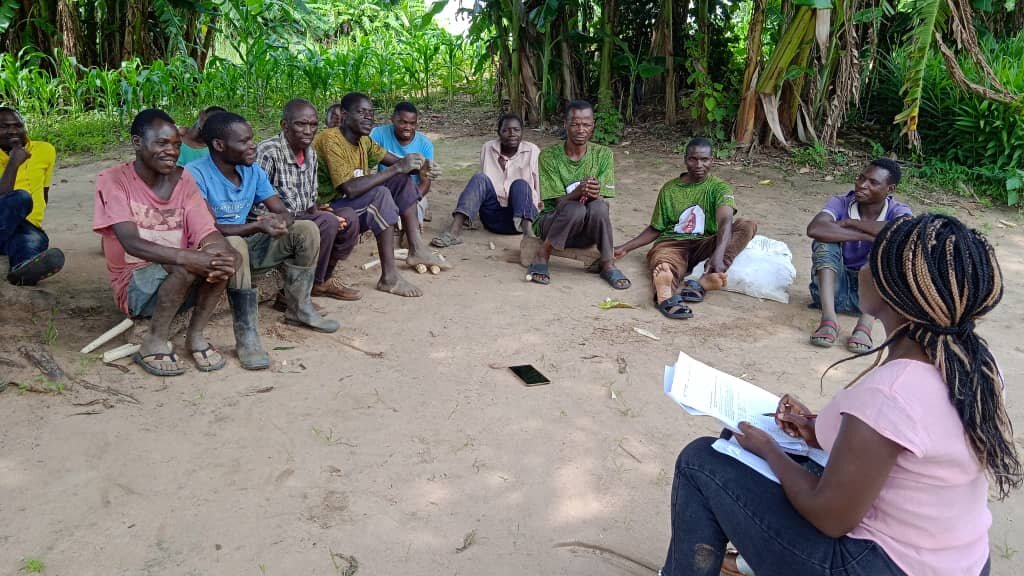By Cathy Watson | Chief of Partnerships
Out of the shadow of COVID and with rain finally blessing the land, we went to Zambia in March and started field work. You’ll be amazed how much wild food the communities are already accessing! We certainly were! Thank you so much for your donations, which helped us get a fuller measure of this.
Of households that we surveyed, a staggering 94% collect wild fruit; 73% collect wild vegetables; and 44% collect insect food such as caterpillars, flying termites and grasshoppers, which are usually fried in oil and served with local vegetables andmaize meal.
With figures this high, it becomes instantly and abundantly clear why the “wild” is so important.
We define “wild” as “natural habitats not cultivated or managed intentionally for provision of edible animals, insects, fruits and vegetable species.” Even the populations of highly nutritious insects depend upon natural vegetation.
In addition, we found that almost 60% of the households grow and manage both indigenous and exotic fruit trees on their farms. The most common exotic fruit trees are mangoes, guava, papaya, oranges, bananas and avocadoes.
The most common indigenous fruit trees are kabeza (Strychnos cocculoides), mbula (Parinari curatellifolia), katope (Syzygium cordatum), futu (Vitex doniana), and nthumbuzya (Ximenia americana).
Our project is in eight chiefdoms in Eastern, Central and Muchinga Provinces. “It is all about agricultural and wild biodiversity and particularly the micronutrient-rich fruit trees, which can diversify these landscapes, and diets forfamilies,” says post-doctoral fellow Alice Karanja, who led the field team.
The team arrived in Zambia with research tools that needed testing and localizing. We also needed enumerators fluent in local languages and with local knowledge. We recruited and trained 10 females and 30 males, mostly teachers, nurses and university students, in data collection with role play and a pre-test exercise with farmers.
At present we are working with 745 households to understand which agricultural and wild plants, especially trees, they rely on for food, income, and feed for their animals.We willexpand quickly to work directly with 5,000 and indirectly with 10,000.
Askinghouseholds about wild fruit, 86.6% of families said it was for home consumption; 12.6% for sale and home consumption; and just 0.8% for sale only.
We asked 300 women about“seasonality”, and learnt that wild food collection starts in October and runs through April.This is the wet rainy season when most households have hungry months as they wait to harvest their planted crops.
Alice Karanja spent time with three local women, basket in hand, picking, gathering, smelling and sampling all that local nature had to offer.
“Wild foods are safe for consumption,” said one. “We use the local foraging knowledge learnt from our mothers to guide us to identify what’s safe to eat and what’s not. We are also passing this knowledge to our children.”
“Right now, food prices have gone up,” said another woman. “In the market, bunches of vegetable and impwa (wild eggplant) are shrinking. Our women’s group forages for wild fruits for our children to eat like masuku (Uapaca kirkiana), ngaingai (Vangueria infausta), and masau (Ziziphus mauritania). Sometimes we sell the surplus.”
“The prevalence of wild foods consumption indicates the substantial contribution that wild food species can make to not only diversify local diets but also highlights the importance of forests in supporting food and nutrition security,” says Karanja.
The task ahead for us is how to bring this important biodiversity on to farms with the pressures of charcoal and other factors driving the loss of trees in the wild.
“We will do this by providing diverseand quality planting material -- an estimated 100,000 trees that they can grow -- as well as tailored nutrition messaging, so that women are fully aware of the nutritional importance of the foods they feed their families,” says project lead Stepha McMullin. “Some wild fruits have more Vitamin C per gram than an orange.”
By Cathy Watson | Chief of Partnerships
Project reports on GlobalGiving are posted directly to globalgiving.org by Project Leaders as they are completed, generally every 3-4 months. To protect the integrity of these documents, GlobalGiving does not alter them; therefore you may find some language or formatting issues.
If you donate to this project or have donated to this project, you can receive an email when this project posts a report. You can also subscribe for reports without donating.
Support this important cause by creating a personalized fundraising page.
Start a Fundraiser
